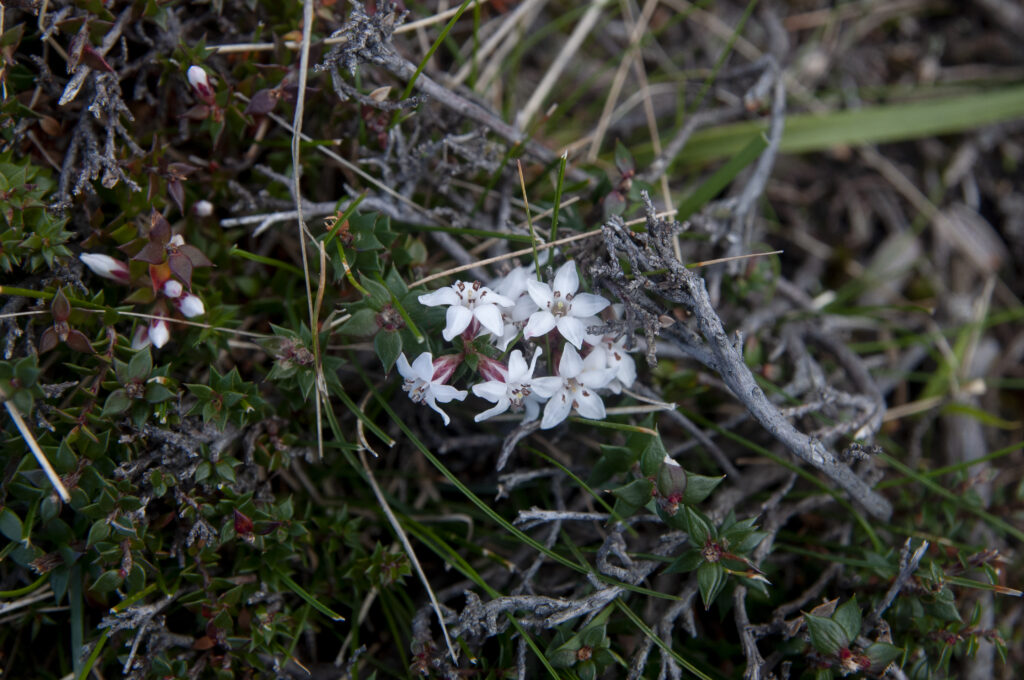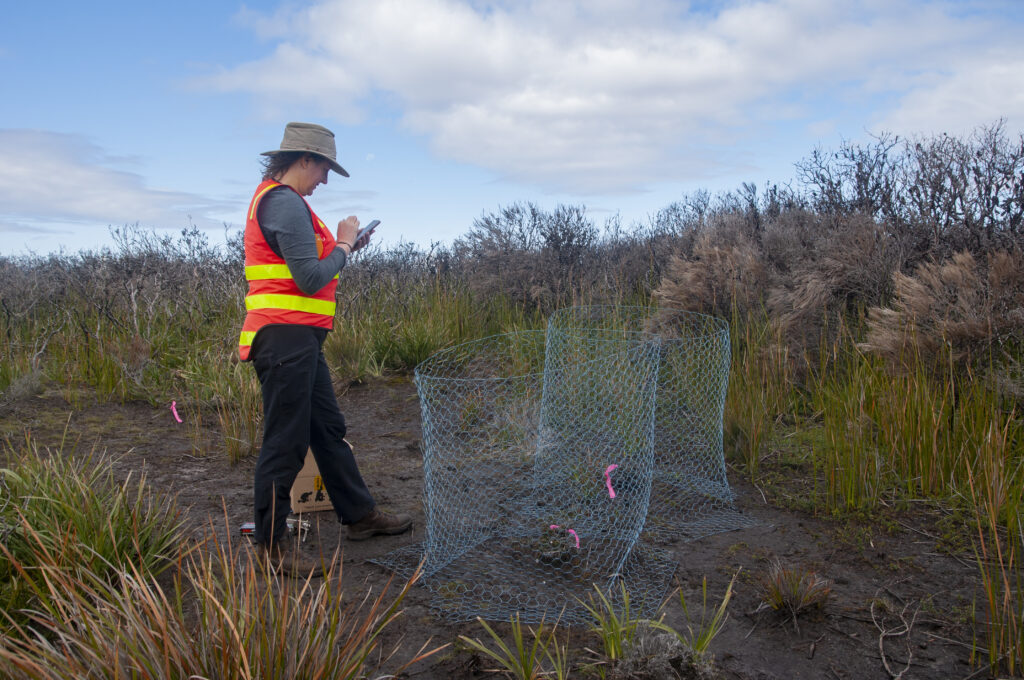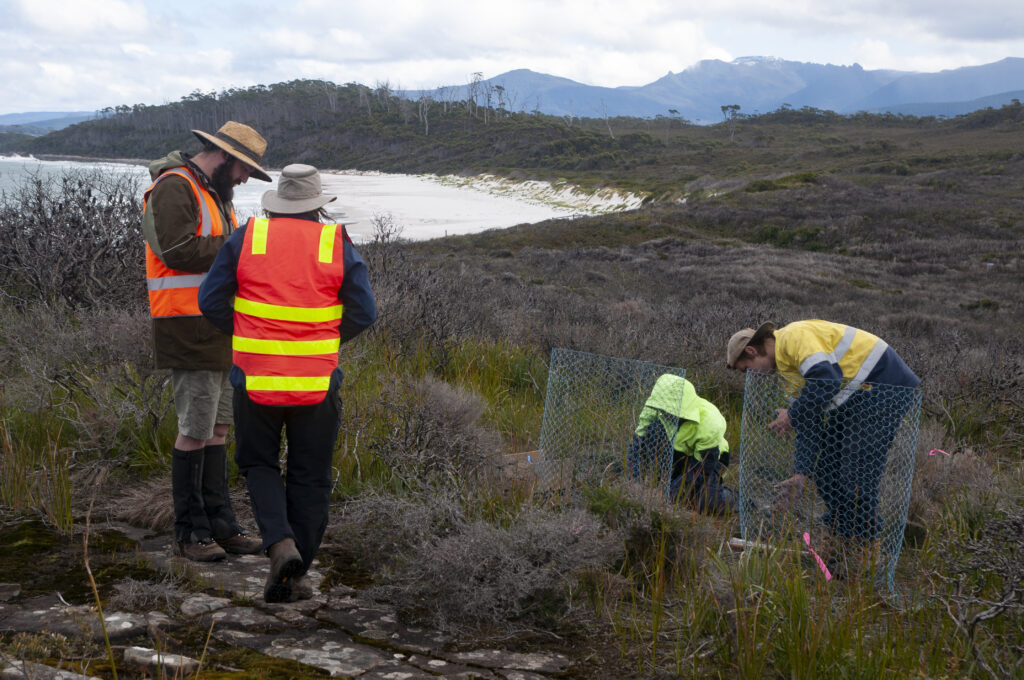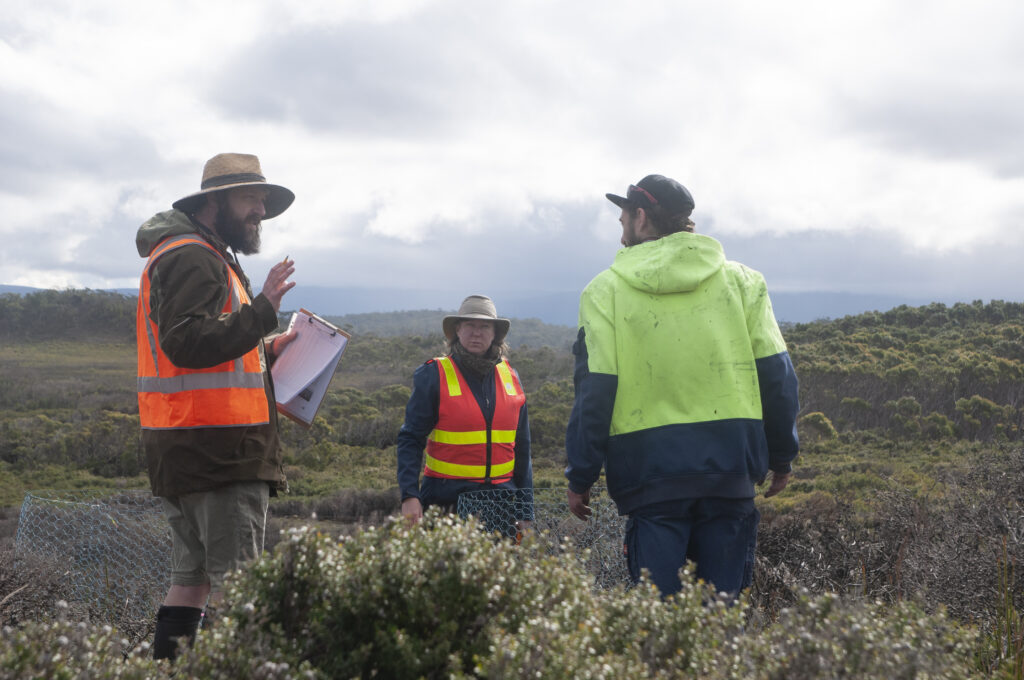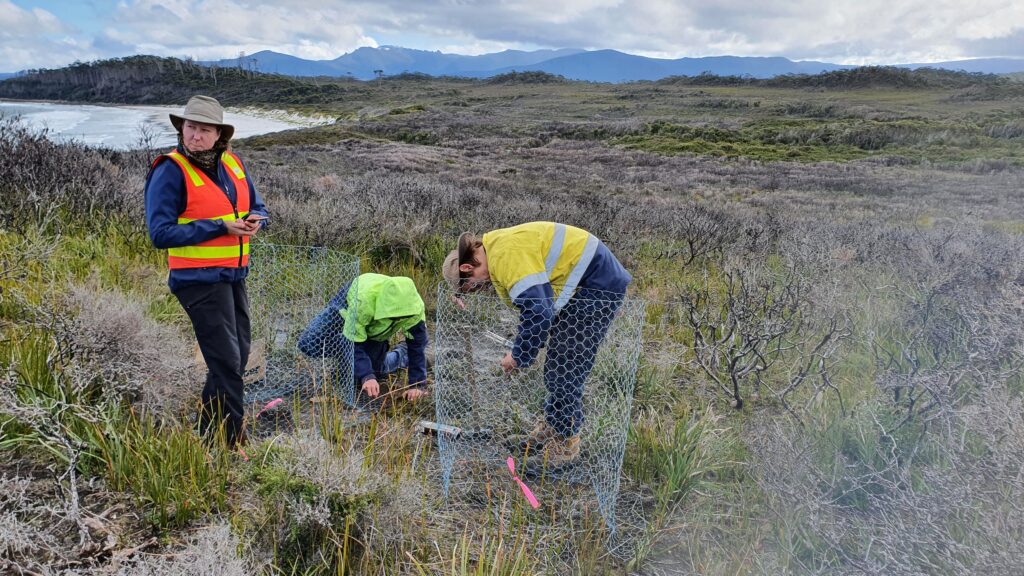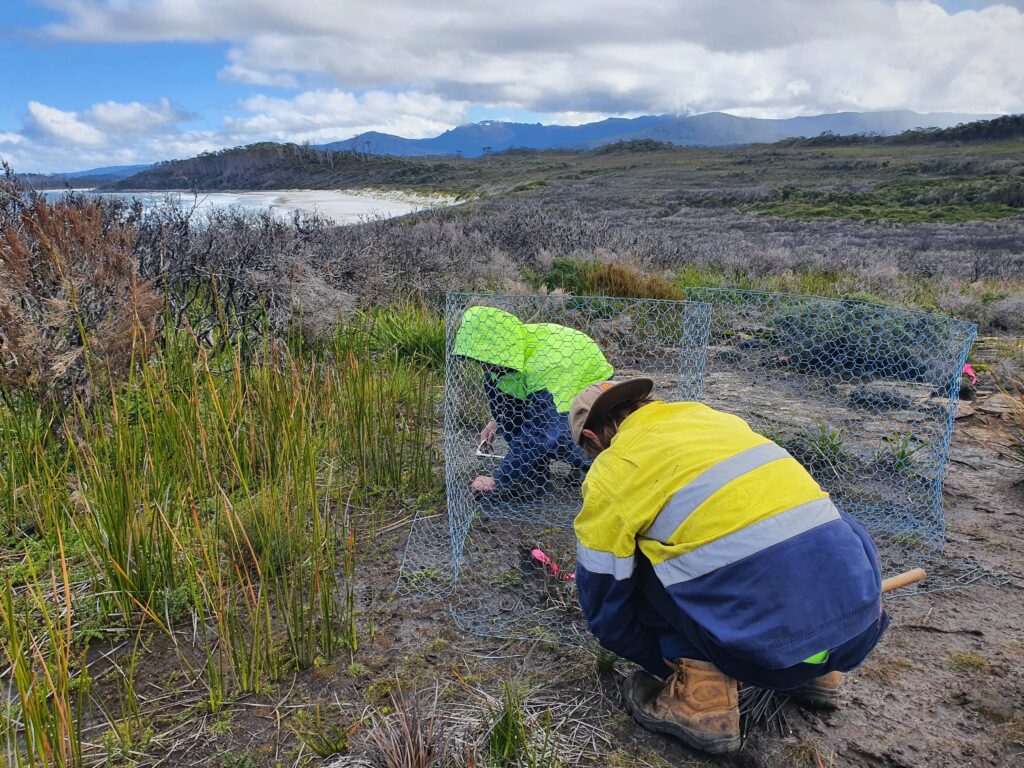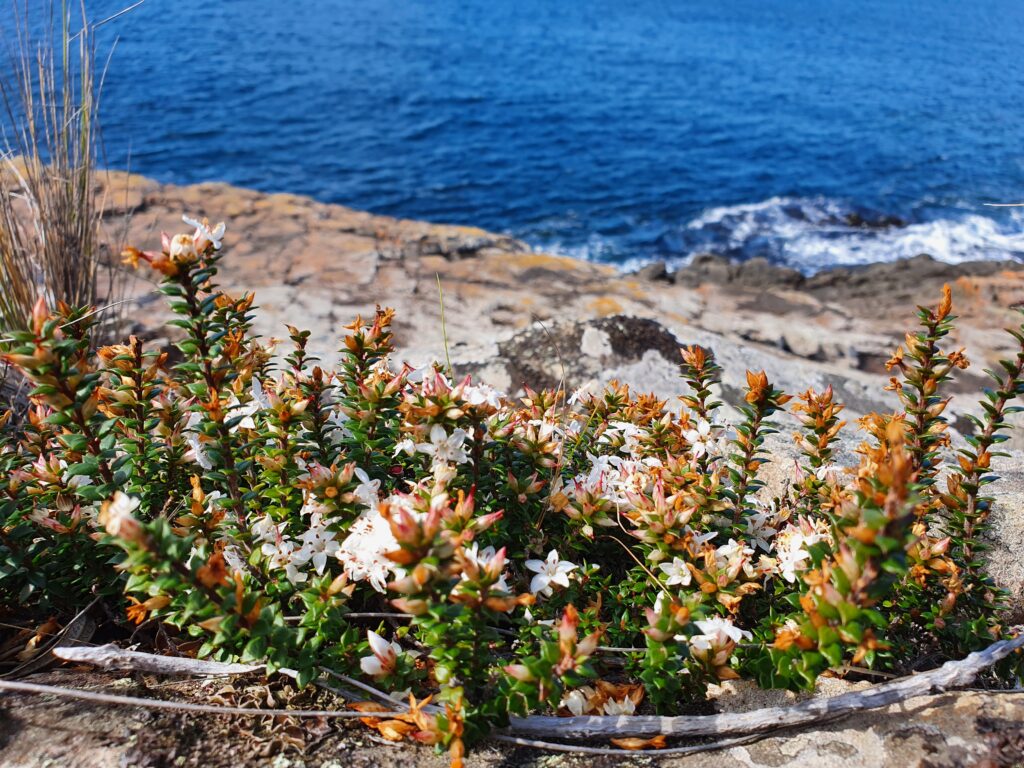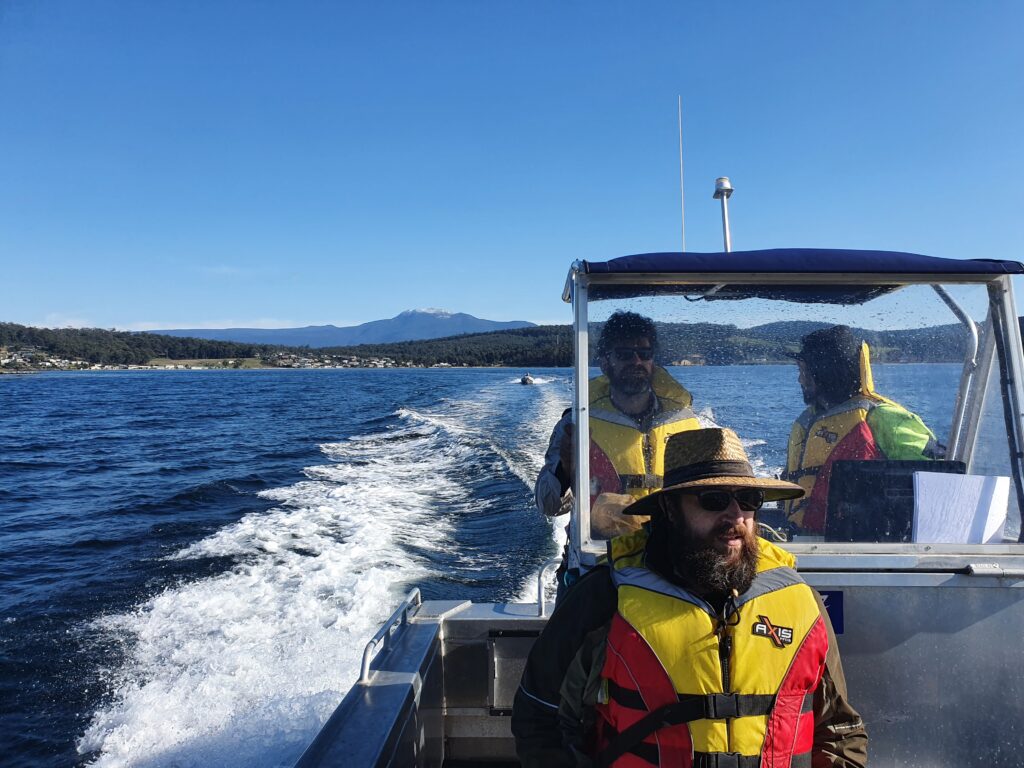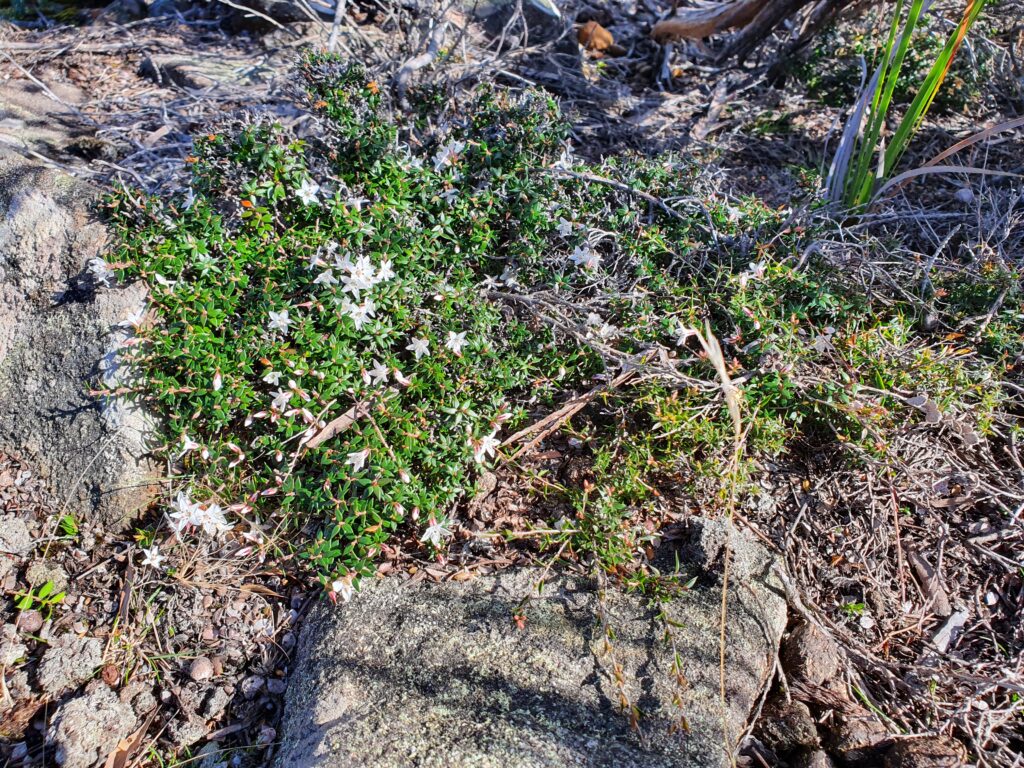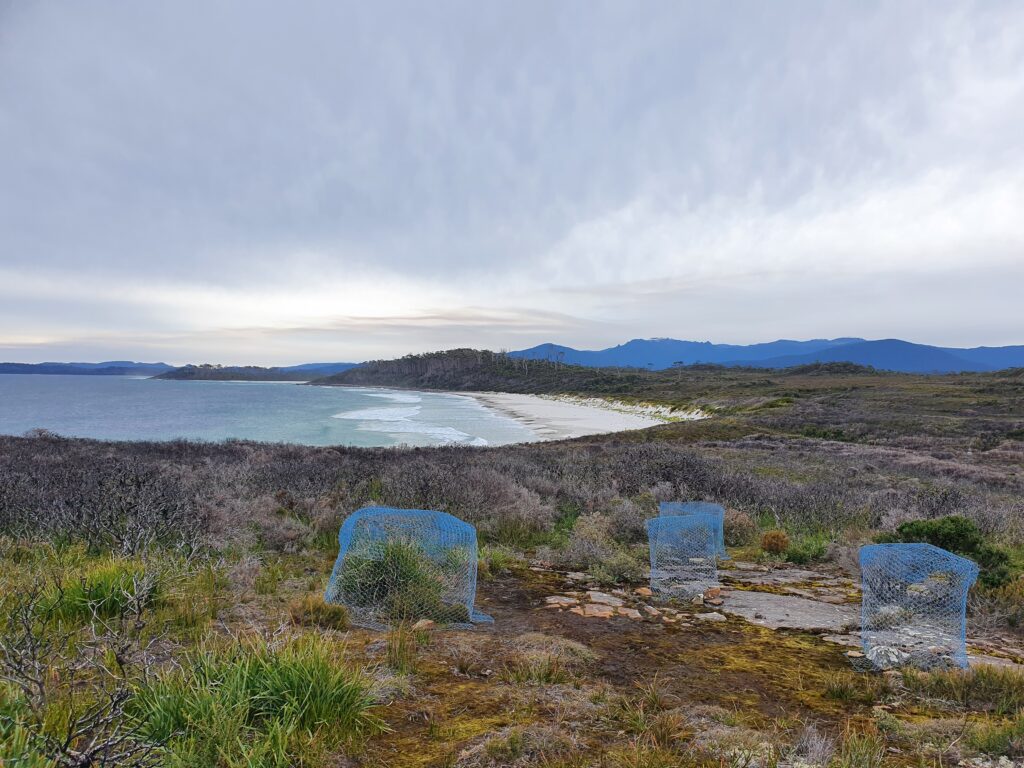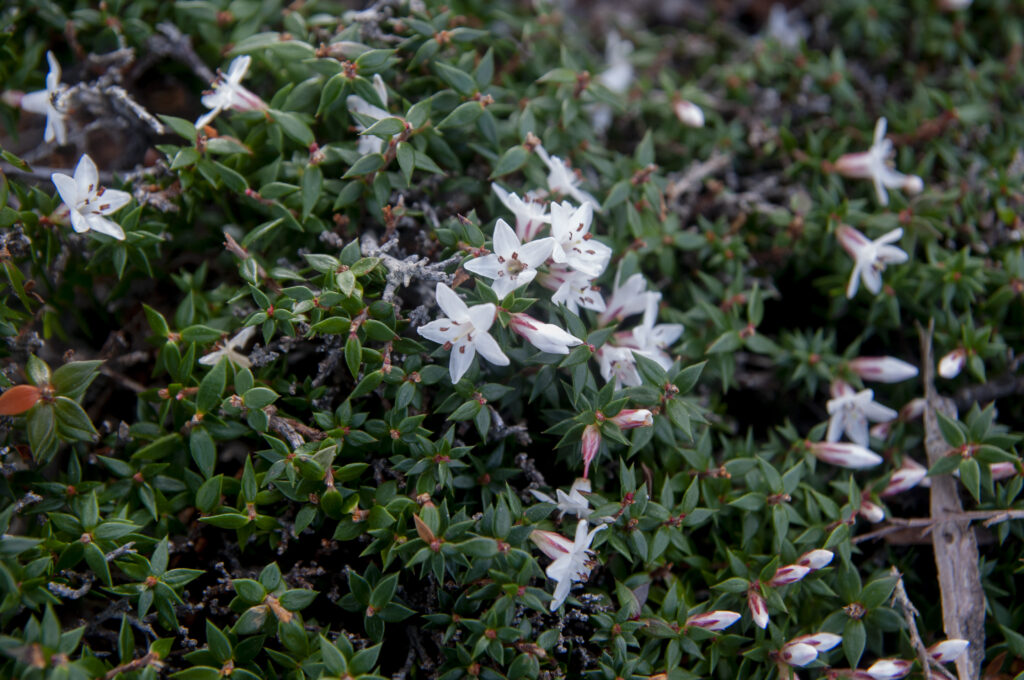In mid-September, staff from NRM South joined DPIPWE and pakana service team members on a 2-day field trip to remote Southport Bluff, an exposed and windswept site that is home to the only known wild population of critically endangered Southport heath (Epacris stuartii).
Southport heath is a small, coastal shrub with delicate white flowers that in ideal conditions can grow up to a metre tall. However, at the Southport Bluff site, many of the plants have been heavily grazed by native browsers and are showing signs of significant stress. In an effort to provide protection to some of these plants and allow them to regenerate enough to develop seed capsules for future collection, specially made wire cages were fitted around 25 plants that showed the most potential for regeneration.
For Maudie Brown, Senior Project Officer leading the threatened plants project, this was only her second visit out to the site since the project began in 2019. ‘Getting out to the bluff is logistically difficult’, explained Maudie. ‘It’s either a long walk or a short boat ride and we’re very lucky to have the support of the Parks and Wildlife Service, who provide us with a boat and staff to man it so we can access the site with enough hours left to undertake work. But it’s an exposed coastal site and access by boat is always weather dependent so, no matter how much preparation and planning we do, we must be prepared to change our plans when necessary. It’s not a publicly accessible site, due to the sensitivity of the heath, and the risk of bringing in weeds or diseases like Phytophthora if appropriate biosecurity protocols aren’t followed, so it’s a real privilege to be able to get out to this area and get some actions underway that will help secure the future of this incredibly rare plant.’
One highlight of the site visit was that the plants were in flower. This made distinguishing the plants from other similar coastal heath plants easier and the team spotted more plants than on the first visit, particularly in the steep rocky sea cliffs areas where the coastal heath is densely intergrown.
The next steps in the project include some upcoming weeding work at the bluff and on nearby Southport Island, which hosts an insurance population of Southport heath established around 20 years ago. Once the newly protected plants at the bluff have regenerated enough to set seed, hopefully by early 2023, Maudie will head back out to the bluff to collect seed which will be stored at the Tasmanian Seed Conservation Centre for use in future restoration and revegetation activities.
This project is supported by NRM South through funding from the Australian Government’s National Landcare Program. NRM South is working on this project in partnership with the Department of Primary Industries, Parks, Water and Environment (DPIPWE), Tasmania’s Parks and Wildlife Service, the Tasmanian Seed Conservation Centre, Threatened Plants Tasmania and pakana Services.
